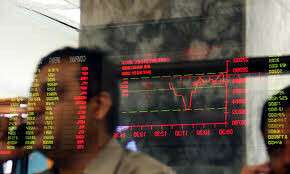Market Overview
KARACHI: Despite ongoing concerns regarding external financing gaps and revenue shortfalls highlighted by the International Monetary Fund (IMF), the stock market continues its upward trajectory. The benchmark KSE-100 index soared to an all-time high above 95,000 points during the outgoing week, reflecting a robust bullish sentiment.
Positive Economic Data Drives Market
The bullish momentum was fueled by positive economic indicators, which bolstered investor confidence. Nevertheless, the potential for a mini-budget looms, following the IMF’s informal assessment of Pakistan’s economic performance. Key concerns raised by the IMF include unsatisfactory revenue collection, a $2.5 billion external financing gap, and the stalled privatization of state-owned enterprises.
Government’s Response to IMF Concerns
In response, the government has highlighted a 150 basis point increase in the debt-to-GDP ratio, now at 10.3%, as a positive development. The Federal Board of Revenue (FBR) has assured that no additional taxation measures will be necessary, which has helped to alleviate some market anxieties. The IMF is scheduled to conduct its first formal review under the new 37-month $7 billion Extended Fund Facility in early 2025, contingent on the end-December performance. This review will determine the release of the second tranche by March.
Weekly Market Performance
KSE-100 Index Surges
The KSE-100 index closed the week at a record high of 94,763 points, marking a 1.6% increase from the previous week. Analysts predict the index may reach 127,000 points by December 2025, driven by economic stability and fiscal consolidation.
Sector Performance
The week’s top-performing sectors included transport, woolen, pharmaceuticals, vanaspati, and glass and ceramics, which saw gains of 14.6%, 11.8%, 9.4%, 8.2%, and 6.5% respectively. Conversely, jute, mutual funds, automobile assemblers, fertilizers, and engineering sectors faced declines of 9.6%, 3.3%, 1.9%, 1.6%, and 0.3% respectively.
Trading Volumes and Foreign Reserves
Trading volumes averaged 878.5 million shares per day, a 19.6% increase from the previous week. The State Bank of Pakistan (SBP) reported an $84 million increase in foreign reserves, bringing the total to $11.2 billion. The rupee remained stable against the US dollar, closing at Rs277.67.
Government and IMF Discussions
Addressing Revenue Shortfalls
During discussions with the IMF, FBR officials attributed the revenue shortfall in the first four months of FY25 to inaccurate economic assumptions, particularly regarding GDP growth, imports, and inflation. The government is exploring both short-term and long-term measures to address these issues, including increased taxes on sugary drinks and imported machinery.
Treasury Bill Auctions
The government successfully raised Rs776 billion through recent Treasury bill auctions, with most participation focused on three-month T-bills. The yield on these bills decreased by 20 basis points, while the yield on 12-month bills increased by 10 basis points.
Car Sales and Economic Indicators
Surge in Car Sales
Car sales saw a significant increase, with 13,108 units sold in October, representing a 27% month-on-month rise and a 112% year-on-year increase. This brought total sales for the first four months of FY25 to 40,693 units, a 50% increase.
Macro-Economic Outlook
The market’s bullish outlook is expected to continue, supported by ongoing monetary easing and improving macroeconomic conditions. Equities are becoming increasingly attractive, trading at a price-to-earnings multiple of 4.2 times and offering a dividend yield of 10.8%.
Future Projections
Market Projections for 2025
Topline Securities forecasts that the Pakistan Stock Market (PSX) could reach 127,000 points by December 2025, driven by economic stability and fiscal consolidation. This projection suggests a 37% return, including a 10% dividend yield. The re-rating of the price-to-earnings ratio is anticipated, supported by improving macro indicators and falling bond yields.
Key Drivers for Growth
The successful completion of the IMF review, the passing of the FY26 budget in line with IMF guidelines, a potential credit rating upgrade for Pakistan, improved relations with the new US government, and the successful privatization of state-owned enterprises such as PIA and Discos are expected to be key growth drivers. The materialization of the Reko Diq deal is also seen as a significant factor.
Frequently Asked Questions (FAQs)
What caused the recent surge in the KSE-100 index?
The recent surge in the KSE-100 index was driven by positive economic data, investor optimism, and assurances from the government and FBR regarding revenue collection and external financing.
What are the main concerns raised by the IMF?
The IMF has raised concerns about unsatisfactory revenue collection, a $2.5 billion external financing gap, and the stalled privatization of state-owned enterprises.
What measures is the government taking to address these concerns?
The government is considering both short-term and long-term measures, including increased taxes on sugary drinks and imported machinery, to address revenue shortfalls. The FBR has assured that no additional taxation measures will be necessary.
What are the future projections for the stock market?
Analysts predict that the KSE-100 index could reach 127,000 points by December 2025, driven by economic stability, fiscal consolidation, and other key growth drivers such as successful IMF reviews and privatization efforts.
How has the automotive sector performed recently?
The automotive sector saw a significant increase in sales, with 13,108 units sold in October, representing a 27% month-on-month rise and a 112% year-on-year increase.
ALSO READ:



